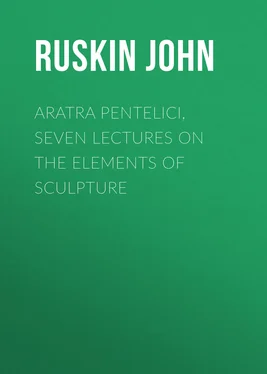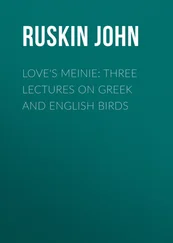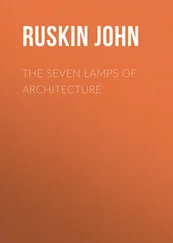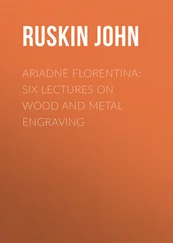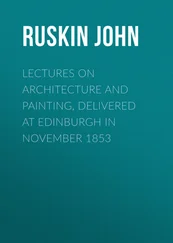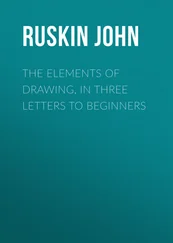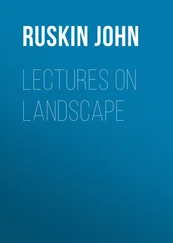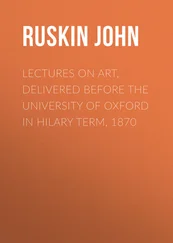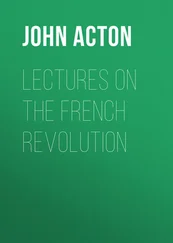John Ruskin - Aratra Pentelici, Seven Lectures on the Elements of Sculpture
Здесь есть возможность читать онлайн «John Ruskin - Aratra Pentelici, Seven Lectures on the Elements of Sculpture» — ознакомительный отрывок электронной книги совершенно бесплатно, а после прочтения отрывка купить полную версию. В некоторых случаях можно слушать аудио, скачать через торрент в формате fb2 и присутствует краткое содержание. Жанр: foreign_antique, foreign_home, literature_19, visual_arts, на английском языке. Описание произведения, (предисловие) а так же отзывы посетителей доступны на портале библиотеки ЛибКат.
- Название:Aratra Pentelici, Seven Lectures on the Elements of Sculpture
- Автор:
- Жанр:
- Год:неизвестен
- ISBN:нет данных
- Рейтинг книги:5 / 5. Голосов: 1
-
Избранное:Добавить в избранное
- Отзывы:
-
Ваша оценка:
- 100
- 1
- 2
- 3
- 4
- 5
Aratra Pentelici, Seven Lectures on the Elements of Sculpture: краткое содержание, описание и аннотация
Предлагаем к чтению аннотацию, описание, краткое содержание или предисловие (зависит от того, что написал сам автор книги «Aratra Pentelici, Seven Lectures on the Elements of Sculpture»). Если вы не нашли необходимую информацию о книге — напишите в комментариях, мы постараемся отыскать её.
Aratra Pentelici, Seven Lectures on the Elements of Sculpture — читать онлайн ознакомительный отрывок
Ниже представлен текст книги, разбитый по страницам. Система сохранения места последней прочитанной страницы, позволяет с удобством читать онлайн бесплатно книгу «Aratra Pentelici, Seven Lectures on the Elements of Sculpture», без необходимости каждый раз заново искать на чём Вы остановились. Поставьте закладку, и сможете в любой момент перейти на страницу, на которой закончили чтение.
Интервал:
Закладка:
6. Thus then we have simply three divisions of Art—one, that of giving colors to substance; another, that of giving form to it without question of resistance to force; and the third, that of giving form or position which will make it capable of such resistance. All the fine arts are embraced under these three divisions. Do not think that it is only a logical or scientific affectation to mass them together in this manner; it is, on the contrary, of the first practical importance to understand that the painter's faculty, or masterhood over color, being as subtle as a musician's over sound, must be looked to for the government of every operation in which color is employed; and that, in the same manner, the appliance of any art whatsoever to minor objects cannot be right, unless under the direction of a true master of that art. Under the present system, you keep your Academician occupied only in producing tinted pieces of canvas to be shown in frames, and smooth pieces of marble to be placed in niches; while you expect your builder or constructor to design colored patterns in stone and brick, and your china-ware merchant to keep a separate body of workwomen who can paint china, but nothing else. By this division of labor, you ruin all the arts at once. The work of the Academician becomes mean and effeminate, because he is not used to treat color on a grand scale and in rough materials; and your manufactures become base, because no well-educated person sets hand to them. And therefore it is necessary to understand, not merely as a logical statement, but as a practical necessity, that wherever beautiful color is to be arranged, you need a Master of Painting; and wherever noble form is to be given, a Master of Sculpture; and wherever complex mechanical force is to be resisted; a Master of Architecture.
7. But over this triple division there must rule another yet more important. Any of these three arts may be either imitative of natural objects or limited to useful appliance. You may either paint a picture that represents a scene, or your street door, to keep it from rotting; you may mold a statue, or a plate; build the resemblance of a cluster of lotus stalks, or only a square pier. Generally speaking, Painting and Sculpture will be imitative, and Architecture merely useful; but there is a great deal of Sculpture—as this crystal ball, 6 6 A sphere of rock crystal, cut in Japan, enough imaginable by the reader, without a figure.
for instance, which is not imitative, and a great deal of architecture which, to some extent, is so, as the so-called foils of Gothic apertures; and for many other reasons you will find it necessary to keep distinction clear in your minds between the arts—of whatever kind—which are imitative, and produce a resemblance or image of something which is not present; and those which are limited to the production of some useful reality, as the blade of a knife, or the wall of a house. You will perceive also, as we advance, that sculpture and painting are indeed in this respect only one art; and that we shall have constantly to speak and think of them as simply graphic , whether with chisel or color, their principal function being to make us, in the words of Aristotle, "θεωρητικοι τον περι τα σωματα καλλους" (Polit. 8. 3), "having capacity and habit of contemplation of the beauty that is in material things;" while architecture, and its correlative arts, are to be practiced under quite other conditions of sentiment.
8. Now it is obvious that so far as the fine arts consist either in imitation or mechanical construction, the right judgment of them must depend on our knowledge of the things they imitate, and forces they resist: and my function of teaching here would (for instance) so far resolve itself, either into demonstration that this painting of a peach 7 7 One of William Hunt's peaches; not, I am afraid, imaginable altogether, but still less representable by figure.
does resemble a peach, or explanation of the way in which this plowshare (for instance) is shaped so as to throw the earth aside with least force of thrust. And in both of these methods of study, though of course your own diligence must be your chief master, to a certain extent your Professor of Art can always guide you securely, and can show you, either that the image does truly resemble what it attempts to resemble, or that the structure is rightly prepared for the service it has to perform. But there is yet another virtue of fine art which is, perhaps, exactly that about which you will expect your Professor to teach you most, and which, on the contrary, is exactly that about which you must teach yourselves all that it is essential to learn.
Fig. 1
9. I have here in my hand one of the simplest possible examples of the union of the graphic and constructive powers,—one of my breakfast plates. Since all the finely architectural arts, we said, began in the shaping of the cup and the platter, we will begin, ourselves, with the platter.
Why has it been made round? For two structural reasons: first, that the greatest holding surface may be gathered into the smallest space; and secondly, that in being pushed past other things on the table, it may come into least contact with them.
Next, why has it a rim? For two other structural reasons: first, that it is convenient to put salt or mustard upon; but secondly, and chiefly, that the plate may be easily laid hold of. The rim is the simplest form of continuous handle.
Farther, to keep it from soiling the cloth, it will be wise to put this ridge beneath, round the bottom; for as the rim is the simplest possible form of continuous handle, so this is the simplest form of continuous leg. And we get the section given beneath the figure for the essential one of a rightly made platter.
10. Thus far our art has been strictly utilitarian, having respect to conditions of collision, of carriage, and of support. But now, on the surface of our piece of pottery, here are various bands and spots of color which are presumably set there to make it pleasanter to the eye. Six of the spots, seen closely, you discover are intended to represent flowers. These then have as distinctly a graphic purpose as the other properties of the plate have an architectural one, and the first critical question we have to ask about them is, whether they are like roses or not. I will anticipate what I have to say in subsequent Lectures so far as to assure you that, if they are to be like roses at all, the liker they can be, the better. Do not suppose, as many people will tell you, that because this is a common manufactured article, your roses on it are the better for being ill-painted, or half-painted. If they had been painted by the same hand that did this peach, the plate would have been all the better for it; but, as it chanced, there was no hand such as William Hunt's to paint them, and their graphic power is not distinguished. In any case, however, that graphic power must have been subordinate to their effect as pink spots, while the band of green-blue round the plate's edge, and the spots of gold, pretend to no graphic power at all, but are meaningless spaces of color or metal. Still less have they any mechanical office: they add nowise to the serviceableness of the plate; and their agreeableness, if they possess any, depends, therefore, neither on any imitative, nor any structural, character; but on some inherent pleasantness in themselves, either of mere colors to the eye, (as of taste to the tongue,) or in the placing of those colors in relations which obey some mental principle of order, or physical principle of harmony.
11. These abstract relations and inherent pleasantnesses, whether in space, number, or time, and whether of colors or sounds, form what we may properly term the musical or harmonic element in every art; and the study of them is an entirely separate science. It is the branch of art-philosophy to which the word 'æsthetics' should be strictly limited, being the inquiry into the nature of things that in themselves are pleasant to the human senses or instincts, though they represent nothing, and serve for nothing, their only service being their pleasantness. Thus it is the province of æsthetics to tell you, (if you did not know it before,) that the taste and color of a peach are pleasant, and to ascertain, if it be ascertainable, (and you have any curiosity to know,) why they are so.
Читать дальшеИнтервал:
Закладка:
Похожие книги на «Aratra Pentelici, Seven Lectures on the Elements of Sculpture»
Представляем Вашему вниманию похожие книги на «Aratra Pentelici, Seven Lectures on the Elements of Sculpture» списком для выбора. Мы отобрали схожую по названию и смыслу литературу в надежде предоставить читателям больше вариантов отыскать новые, интересные, ещё непрочитанные произведения.
Обсуждение, отзывы о книге «Aratra Pentelici, Seven Lectures on the Elements of Sculpture» и просто собственные мнения читателей. Оставьте ваши комментарии, напишите, что Вы думаете о произведении, его смысле или главных героях. Укажите что конкретно понравилось, а что нет, и почему Вы так считаете.
